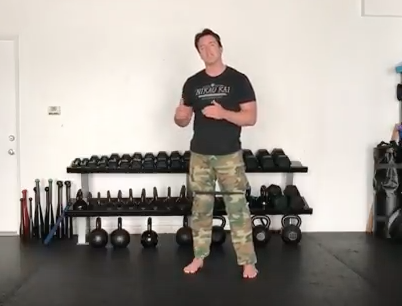Single-limb exercises, especially for the lower body, are essential for everyone, regardless if they’re a pro athlete or weekend warrior. The benefits of single-leg exercises are numerous, but a few key points to mention are that they recruit additional hip muscles that often get minimal stimulation with double-leg exercises, and they make the core play a larger role in each movement.
The single-leg squat has gained a lot of popularity over the past few years. But there’s a problem: most people do it with terrible form, as evident by extreme spinal flexion. It’s not your fault, as the saying goes. You just haven’t been given the right information to make it work for you. To perform a full single-leg squat requires a lot of strength, mobility, and stability. So you must improve those qualities to get it right.
I could honestly write an entire book on perfecting this exercise. I mention this because I’m about to outline the common problems that are probably holding you back, but there could be other factors working against you.
Now, before I get to the good stuff I must differentiate between a single-leg squat and a pistol. A pistol is the exercise that requires you to squat on one leg with the opposite leg held straight out in front and off the ground. It was popularized by my friend, Pavel Tsatsouline. It’s a good exercise, but it’s extremely advanced. To get it right you must have crazy hamstring flexibility and plenty of strength. Most people are severely lacking the hamstring mobility needed to keep your spine from bending like a fresh twig.
Perfecting the pistol requires another set of guidelines. This post is about the single-leg squat for people who have average mobility. Here’s how to get it right.
Step #1: Start with a few minutes of rope jumping or similar exercises to increase your body temperature. Do some foam rolling at this time if you wish.
Step #2: Stretch your hip flexors: the rectus femoris and psoas. I’m not a big fan of static stretching before a workout, but when it comes to the hip flexors it’s usually a good idea. Stiff hip flexors can diminish your ability to build maximum tension in your glutes and lockout your hips. That’s why stiff hip flexors are often referred to as a “parking brake” that’s partially engaged, thus limiting your hip power. Another reason to stretch your hip flexors is that it allows you to remain more upright in the single-leg squat.
Step #3: Groove the right motor pattern with a single-leg squat facing a wall. When most people do a single-leg squat they shift their torso forward. This can be caused by subpar thoracic extension and a lack of dorsiflexion in the ankle joint. This exercise restores both. It’s a fantastic technique-builder that I learned from spinal expert, Dr. Craig Liebenson. Perform 10 reps with each leg.
Step #4: Activate your hip abductors. Another problem people tend to have is that their leg buckles in as they squat. This is caused by weakness in the gluteus medius/minimus muscles that must fire strongly to hold your leg in proper position. The hip external rotation exercise strengthens and activates those muscles. This can be used as a stand-alone exercise when weakness is evident, or as an activation drill.
Step #5: Perform the single-leg squat on a high bench. The first way to build this exercise is to start by standing barefoot (or with Vibram shoes) on a relatively high bench. The key point is that you must be able to maintain an arch in your low back. If you step down and you feel your low back round (your spine will flex), the bench is too high. Start at a height that allows you to maintain lordosis (low back arch) and increase the height – or the distance you drop down – to build your single-leg squat. The goal is to be able to perform a range of motion that allows your hips to drop below knee level while maintaining an arch in your low back. This can take time so be patient.
Perform these exercises a few times per week and focus on increasing your range of motion with the single-leg squat while standing on a bench. Your hips, legs, and core will get stronger and more powerful than ever!
Stay focused,
CW
Click the banner below to find out how to burn fat in record time…


